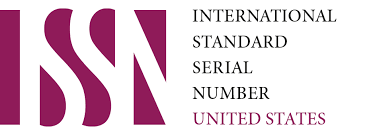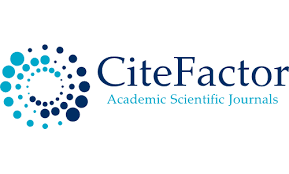Deep Learning's Impact on MRI Image Analysis: A Comprehensive Survey
Keywords:
magnetic resonance imaging, deep learning, segmentation, classification, transfer learningAbstract
Modern deep learning technology is without a doubt catalyzing a transformative revolution across various critical domains, including image analysis, natural language processing, and expert systems. It stands as an indispensable technique with a profound potential for shaping future applications. Recently, Magnetic Resonance Imaging (MRI) has garnered substantial attention due to its non-invasive attributes and its remarkable ability to provide intricate soft tissue contrasts within the body. Leveraging the significant advancements in deep learning, researchers have proposed ingenious approaches to augment the processing and analysis of MRI images. This article endeavors to present a comprehensive overview of how deep learning is being effectively employed for MRI image processing and analysis. The narrative commences with a succinct introduction to the fundamental concept of deep learning, followed by an elucidation of the diverse imaging modalities employed within the realm of MRI. Subsequently, the article delves into a comprehensive exploration of prevalent deep learning architectures. Building upon this foundation, the article navigates through a diverse array of applications made possible by harnessing deep learning within the domain of MRI. This encompassing exploration includes an emphasis on fundamental deep learning techniques, the transfer of knowledge between varying domains, classification paradigms, as well as the intricate domain of image segmentation. However, the article's exploration does not conclude here; it extends to deliberating on the strengths and limitations inherent in widely adopted tools. Additionally, it introduces specific deep learning tools that have been meticulously tailored to cater to the unique demands of MRI applications. In the final stretch, the article provides an impartial assessment of the role and impact of deep learning within the context of MRI. It also offers insightful projections into the landscape of future advancements and emerging trends. With a discerning eye on the trajectory ahead, the article articulates the immense potential for deep learning to significantly advance MRI image analysis, solidifying its pivotal role as a leading-edge technology shaping the landscape of medical imaging. In summation, the fusion of deep learning techniques with MRI analysis is poised to bring forth transformative advancements. The amalgamation of these disciplines stands to propel the boundaries of MRI image analysis, redefining the horizons of medical imaging while fortifying deep learning's status as a cornerstone technology driving this evolution
References
Oldenberg, M. M. (2012). Multiple sclerosis review. Pharmacy and Therapeutics, 37(3), 175.
Dobson, R., & Giovannoni, G. (2019). Multiple sclerosis–a review. European journal of neurology, 26(1), 27-40.
McFarlin, D. E., & McFarland, H. F. (1982). Multiple sclerosis. New England Journal of Medicine, 307(20), 1246-1251.
Bauer S, Wiest R, Nolte LP, Reyes M. A survey of MRI-based medical image analysis for brain tumor studies. Phys Med Biol. 2013 Jul 7;58(13):R97-129. doi: 10.1088/0031-9155/58/13/R97. Epub 2013 Jun 6. PMID: 23743802.
Young, Robert J., and Edmond A. Knopp. “Brain MRI: Tumor Evaluation.” Journal of MagneticResonance Imaging, vol. 24, no. 4, Oct. 2006, pp. 709–724, https://doi.org/10.1002/jmri.20704.
Van Meir, E. G. et al. Exciting new advances in neuro-oncology: the avenue to a cure for malignant glioma. CA. Cancer J. Clin. 60(3), 166–193 . https://doi.org/10.3322/caac.20069 (2010).
American Association of Neurological Surgeons, classification of Brain Tumors, available on https://www.aans.org/en/Media/Classifications-of-Brain-Tumors .
H. Lee, R. Grosse, R. Ranganath, and A. Y. Ng, Convolutional deep belief networks for scalable unsupervised learning of hierarchical representations, in Proc. 26th Annual Int. Conf. Machine Learning, Montreal, Canada, 2009, pp. 609–616.
Y. LeCun and Y. Bengio, Convolutional networks for images, speech, and time-series, in The Handbook of Brain Theory and Neural Networks, M. A. Arbib, ed. Cambridge, MA, USA: MIT Press, 1995,.
A. Krizhevsky, I. Sutskever, and G. E. Hinton, ImageNet classification with deep convolutional neural networks, in Proc. 25th Int. Conf. Neural Information Processing Systems, Lake Tahoe, NV, USA, 2012, pp. 1097–1105.
G. R.Wu, M. Kim, Q.Wang, Y. Z. Gao, S. Liao, and D. G. Shen, Unsupervised deep feature learning for deformable registration of MR brain images, in Proc. 16th Int.Conf. Medical Image Computing and Computer-Assisted Intervention, Nagoya, Japan, 2013, pp. 649–656.
J. Dolz, C. Desrosiers, and I. B. Ayed, 3D fully convolutional networks for subcortical segmentation in MRI: A large-scale study, arXiv preprint arXiv: 1612.03925, 2016.
Md. Alamin Talukder; Md. Manowarul Islam; Md. Ashraf Uddin; Arnisha Akhter; Md. Alamgir Jalil Pramanik; Sunil Aryal; Muhammad Ali Abdulllah Almoyad; Khondokar Fida Hasan; Mohammad Ali Moni,(2023), An efficient deep learning model to categorize brain tumor using reconstruction and fine-tuning, Expert Systems with Applications, Volume 230, 2023, available on https://doi.org/10.1016/j.eswa.2023.120534.
R. B. Palm, Prediction as a candidate for learning deep hierarchical models of data, Master’s thesis, Technical University of Denmark, Denmark, 2012.
R. Al-Rfou, G. Alain, A. Almahairi, C. Angermueller, D. Bahdanau, N. Ballas, F. Bastien, J. Bayer, A. Belikov, A. Belopolsky, et al., Theano: A python framework for fast computation of mathematical expressions, arXiv preprint arXiv: 1605.02688, 2016.
F. Chollet, Keras: Theano-based deep learning library, Code, https://github.com/fchollet.Documentation:http: //keras.io, 2015.
Khurram, Ejaz., Mohd, Shafry, Mohd, Rahim., Muhammad, Arif., Diana, Roxana, Izdrui., Daniela, Maria, Craciun., Oana, Geman. (2022). Review on Hybrid Segmentation Methods for Identification of Brain Tumor in MRI. Contrast Media & Molecular Imaging, doi: 10.1155/2022/1541980 19. P.C. Barman, M.S. Miah, B.C. Singh, et al., MRI image segmentation using level set method and implement an medical diagnosis system. Comput. Sci. Eng., 2011, 1(5):
L. Pei, S.M.S. Reza, W. Li, et al., Improved brain tumor segmentation by utilizing tumor growth model in longitudinal brain MRI. Proc. SPIE-Int. Soc. Opt. Eng., 2017, 10134.
P. Mlynarski, H. Delingette, A. Criminisi, et al., 3D convolutional neural networks for tumor segmentation using long-range 2D context. Comput. Med. Imaging Graph, 2019.
A. Gooya, GLISTR: Glioma image segmentation and registration. IEEE Trans. Med. Imaging, 2012, 31(10): 1941-1954.
Lee, Hyungtae, and Heesung Kwon. “Going deeper with contextual CNN for hyperspectral image classification.” IEEE Transactions on Image Processing 26.10 (2017): 4843-4855.
Lee, Hyungtae, Sungmin Eum, and Heesung Kwon. “Cross-domain CNN for hyperspectral image classification.” In IGARSS 2018-2018 IEEE International Geoscience and Remote Sensing Symposium, pp. 36273630. IEEE, 2018.
cheng, Gong, Chengcheng Ma, Peicheng Zhou, Xiwen Yao, and Junwei Han. “Scene classification of high resolution remote sensing images using convolutional neural networks.” In 2016 IEEE International Geoscience and Remote Sensing Symposium (IGARSS), pp. 767-770. IEEE, 2016.
Xie, Wen, et al. “POLSAR Image Classification via Clustering-WAE Classification Model.” IEEE Access 6 (2018): 40041-40049.
Guo, Yuwei, Licheng Jiao, Shuang Wang, Shuo Wang, Fang Liu, and Wenqiang Hua. “Fuzzy superpixels for polarimetric SAR images classification.” IEEE Transactions on Fuzzy Systems 26, no. 5 (2018): 28462860.
Chong, Shengwei, Chein-I. Chang and Ye Zhang. “Iterative Support Vec-tor Machine for Hyperspectral Image Classification.” In 2018 25th IEEE International Conference on Image Processing (ICIP), pp. 33093312.
Gong, Chen, Dacheng Tao, Stephen J. Maybank, Wei Liu, Guo-liang Kang, and Jie Yang. “Multi-modal curriculum learning for semi-supervised image classification. IEEE Transactions on Image Processing 25, no. 7 (2016): 3249-3260.
Chang, Xiangrong, Kai Jiang, Yaoguo Zheng, Jinliang an, Yanning Hu, and Licheng Jiao. “Spatially constrained Bag-of-Visual-Words for hyper-spectral image classification. ” In 2016 IEEE International Geoscience and Remote Sensing Symposium (IGARSS), pp. 501-504. IEEE, 2016.
Georgescu, Florin-Andrei, Corina Vaduva, Dan Raducanu, and Mihai Datcu. “Feature extraction for patch-based classification of multispectral earth observation images.” IEEE Geoscience and Remote Sensing Letters 13, no. 6 (2016): 865-869.
Kido, Shoji, Yasusi Hirano, and Noriaki Hashimoto. “Detection and clas-sification of lung abnormalities by use of convolutional neural network (CNN) and regions with CNN features (R-CNN).” In 2018 International Workshop on Advanced Image Technology (IWAIT), pp. 1-4. IEEE, 2018.
Risojevic, Vladimir, and Zdenka Babic. “Unsupervised quaternion fea-ture learning for remote sensing image classification.” IEEE Journal of Selected Topics in Applied Earth Observations and Remote Sensing 9.4 (2016): 1521-1531.
Bejnordi, Babak Ehteshami, Geert Litjens, Nadya Timofeeva, Irene OtteHller, Andr Homeyer, Nico Karssemeijer, and Jeroen AWM van der Laak. “Stain specific standardization of whole-slide histopathological images.” IEEE transactions on medical imaging 35, no. 2 (2016): 404415.
Yuan, Lin, Xue Wei, Hui Shen, Ling-Li Zeng, and Dewen Hu. “Multi-Center Brain Imaging Classification Using a Novel 3D CNN Approach.” IEEE Access 6 (2018): 49925-49934.
Ahn, Euijoon, Ashnil Kumar, Jinman Kim, Changyang Li, Dagan Feng, and Michael Fulham. “X-ray image classification using domain trans-ferred convolutional neural networks and local sparse spatial pyramid.” In 2016 IEEE 13th International Symposium on Biomedical Imaging (ISBI), pp. 855-858. IEEE, 2016.
Zhong, Zilong, Jonathan Li, Langley Ma, Han Jiang, and He Zhao. “Deep residual networks for hyperspectral image classification.” In 2017 IEEE International Geoscience and Remote Sensing Symposium (IGARSS), pp. 1824-1827. IEEE, 2017.
Shin, Hoo-Chang, Holger R. Roth, Mingchen Gao, Le Lu, Ziyue Xu, Isabella Nogues, Jianhua Yao, Daniel Mollura, and Ronald M. Summers. “Deep convolutional neural networks for computer-aided detection: CNN architectures, dataset characteristics and transfer learning.” IEEE transac-tions on medical imaging 35, no. 5 (2016): 1285-1298.
Son, Young-Jun, and Ouk Choi. “Image-based hand pose classification using faster R-CNN.” In 2017 17th International Conference on Control, Automation and Systems (ICCAS), pp. 1569-1573. IEEE, 2017.
Li, Qingyan, Jinye Peng, Zhan Li, and Yifeng Ren. “An image clas-sification algorithm integrating principal component analysis and spatial pyramid matching features.” In 2017 Fourth International Conference on Image Information Processing (ICIIP), pp. 1-6. IEEE, 2017.
Chen, Cheng, Jian Huang, Chongyu Pan, and Xingsheng Yuan. “Military Image Scene Recognition Based on CNN and Semantic Information.” In 2018 3rd International Conference on Mechanical, Control and Computer Engineering (ICMCCE), pp. 573-577. IEEE, 2018.
Kuanar, Shiba, K. R. Rao, and Christopher Conly. “Fast Mode decision in HEVC intra prediction, using region wise CNN feature classification.” 2018 IEEE International Conference on Multimedia Expo Workshops (ICMEW). IEEE, 2018.
(2023). Fuzzy Hybrid Filtration based Rician Noise Removal and Classification of MRI Images without Segmentation using Deep Learning Technique. doi: 10.1109/icssit55814.2023.10061104
Srigiri, Krishnapriya., Yepuganti, Karuna. (2023). Pre-trained deep learning models for brain MRI image classification. Frontiers in Human Neuroscience, doi: 10.3389/fnhum.2023.1150120
(2023). Brain Tumor MRI Identification and Classification Using DWT, PCA, and KSVM. doi: 10.36227/techrxiv.21771329.v2
Muhammad, Hameed, Siddiqi., Mohammad, Azad., Yousef, Alhwaiti. (2022). An Enhanced Machine Learning Approach for Brain MRI Classification. Diagnostics, doi: 10.3390/diagnostics12112791
(2022). Machine learning based CAD system. doi: 10.1109/sta56120.2022.10019088
Ferdaus, Anam, Jibon., Mayeen, Uddin, Khandaker., Mahadi, Hasan, Miraz., Himon, Thakur., Fazle, Rabby., Nissren, Tamam., Abdelmoneim, Sulieman., Y, S, Itas., Hamid, Osman. (2022). Cancerous and Non-Cancerous Brain MRI Classification Method Based on Convolutional Neural Network and Log-Polar Transformation. Healthcare, doi: 10.3390/healthcare10091801
Nikhil, Pateria., Dilip, Kumar., Sunil, Kumar. (2021). Magnetic Resonance Imaging Classification Methods: A Review. doi: 10.1007/978-981-15-7486-3_38
Hind Rustum Mohammed and Lamyaa Fahem Katran, 2019. Hybrid Method for Detection Tumor using Genetic Algorithm and Swarm Optimization after Wavelet Domain Filtering Then uing Marr-Hilerth. Journal of Engineering and Sciences Applied, 14: 1279-1285. Available on : DOI: 10.36478/jeasci.2019.1279.1285
Katran, L. F. (2019). Hybrid method for the detection of brain tumor image usingimproving K-Mean and hybrid multilevel image fusion. http://mail.jardcs.org/abstract.php?id=94
Wang, J. (2018). Ground target classification in noisy SAR images using convolutional neural networks. Available on Ground Target Classification in Noisy SAR Images Using Convolutional Neural Networks | Semantic Scholar last visited (27/8/2023).
Cao, Q. (2018). Urban Land Use/Land Cover Classification based on Feature fusion fusing Hyperspectral image and LIDAR data, available on
https://www.semanticscholar.org/paper/urban-land-use-land-cover-classification-based-on-cao zhong/d2a5461b936cd2543edccdbed9641cbfec3a6b3f
R. Singh and R. Gupta, "Improvement of Classification Accuracy Using Image Fusion Techniques," 2016 International Conference on Computational Intelligence and Applications (ICCIA), Jeju, Korea (South), 2016, pp. 36-40, doi: 10.1109/ICCIA.2016.21.
Riri, H. (2016). Classification and recognition of dental images using a decisional tree. https://www.semanticscholar.org/paper/Classification-and-Recognition-of-Dental-Images-a-Riri-Elmoutaouakkil/33432247e4a167176978b3b2e1c1a38d72ef2b4f
Kai xiao,A.Lei Liang, Hai Bing Guan, Aboul Ella Hassanien ,”Extraction and Application of Deformation Based Feature in Medical Images”,ELSEVIER Neuro computing 2013.
Padma Nanda Gopal &R.Sukanesh,” wavelet statistical feature based segmentation and classification of brain computed tomography images”IET Image Prosess Vol7 pp 25-32 2013.
Hashem Kalbkhani, Mahrokh G Shayesteh, Behrooz Zali-vargahan “ Robust algorithm for Brain Magnetic Resonance Image Classification based on GARCH variances Series”, ELSEVIER Biomedical Signal Processing and Control 8(2013) 909-919.
Sindhumol S, Anil Kumar, Kannan Balakrishnan “spectral clustering independent component analysis for tissue classification from brain MRI” ELSEVIER, Biomedical signal processing and control (2013)667-674
Deepa and Devi,” Feature and model selection with discriminatory visualization for diagnostic classification of brain tumor,”int journal of computer science &engineerig IJSCET vol no4 2229-3345,2013.
Rupal R. Agravat, Mehul S. Raval, Deep Learning for Automated Brain Tumor Segmentation in MRI Images, Soft Computing Based Medical Image Analysis, Academic Press, 2018, https://doi.org/10.1016/B978-0-12-813087-2.00010-5.
Wacker, J. (2019, December 28). Transfer learning for brain tumor segmentation. arXiv.org. https://arxiv.org/abs/1912.12452
Pravitasari, A. A., Iriawan, N., Almuhayar, M., Azmi, T., Irhamah, I., Fithriasari, K., Purnami, S. W., & Ferriastuti, W. (2020). UNet-VGG16 with transfer learning for MRI-based brain tumor segmentation. TELKOMNIKA Telecommunication Computing Electronics and Control, 18(3), 1310. https://doi.org/10.12928/telkomnika.v18i3.14753
Y. Lecun, L. Bottou, Y. Bengio, P. Haffner, “Gradient-based Learning Applied to Document Recognition,”Proceedings of the IEEE, vol. 86, no. 11, pp. 2278-2324, Nov. 1998
(UNet-VGG16 with transfer learning for MRI-based brain tumor segmentation. Available from:https://www.researchgate.net/publication/342126824_UNetVGG16_with_transfer_learning_for_MRI-based_brain_tumor_segmentation [accessed Aug 24 2023].
Downloads
Published
Issue
Section
License

This work is licensed under a Creative Commons Attribution-NonCommercial 4.0 International License.
User Rights
Under the Creative Commons Attribution-NonCommercial 4.0 International (CC-BY-NC), the author (s) and users are free to share (copy, distribute and transmit the contribution).
Rights of Authors
Authors retain the following rights:
1. Copyright and other proprietary rights relating to the article, such as patent rights,
2. the right to use the substance of the article in future works, including lectures and books,
3. the right to reproduce the article for own purposes, provided the copies are not offered for sale,
4. the right to self-archive the article.












